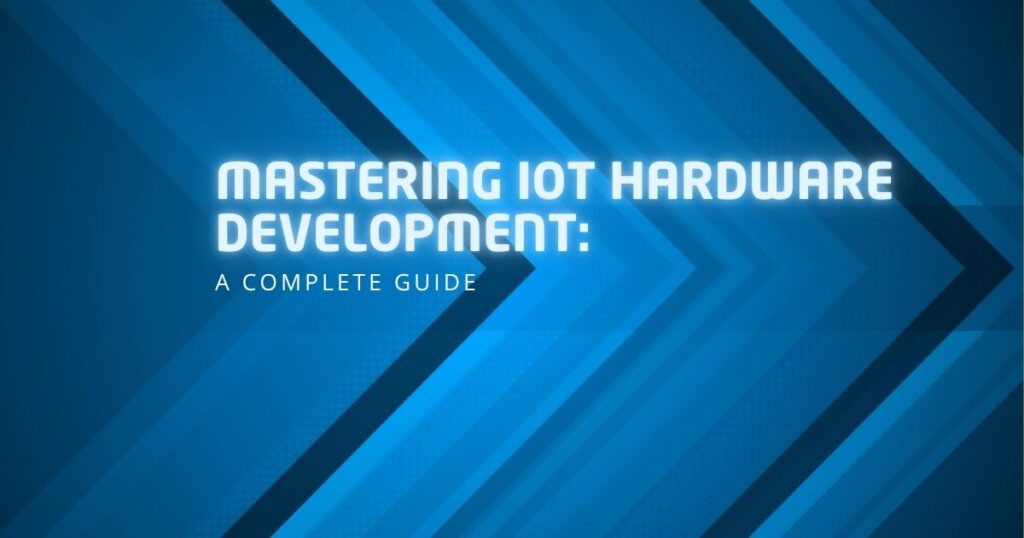Welcome to the age where everything is smart—smart homes, smart cars, even smart toothbrushes! And behind this intelligence is the powerful world of IoT hardware development. If you’re building the next innovative device, then understanding the nuts and bolts of how IoT hardware is developed, tested, and deployed is a must.
In this guide, we’ll walk through the essentials of IoT hardware development, including IoT hardware prototyping development services, tools, trends, challenges, and more. Let’s plug in and get started!
What is IoT Hardware Development?
IoT (Internet of Things) hardware development is the process of designing and building physical components that connect to the internet to collect, send, and receive data. Think of sensors, microcontrollers, actuators, chips, and wireless communication modules—these are the real MVPs making your smart device tick.
Why IoT Hardware is the Backbone of Smart Technology
While software gets most of the limelight, it’s hardware that brings IoT to life. No sensor, no data. No communication module, no network. No microcontroller, no brain. The hardware is what senses, processes, and communicates in the real world.
Key Components of IoT Hardware
1. Microcontrollers & Microprocessors
The brain of the IoT device. Examples include Arduino, ESP32, and Raspberry Pi.
2. Sensors
These gather data like temperature, humidity, motion, GPS location, and more.
3. Actuators
Actuators take action based on the processed data—like turning on a light or opening a valve.
4. Connectivity Modules
Wi-Fi, Bluetooth, Zigbee, LoRa, or NB-IoT—they help the hardware communicate with other devices or the cloud.
5. Power Sources
Battery, solar, or direct power supply—how your device stays alive.
IoT Hardware Prototyping: The First Crucial Step
Before your product hits the market, you need a working model. This is where IoT hardware prototyping development services shine.
These services provide:
-
Rapid prototyping boards
-
Custom PCB design
-
3D-printed enclosures
-
Embedded firmware development
-
Testing and iteration
Prototyping lets you test the device in real-world environments and fix bugs before mass production. It’s like test-driving a car before buying.
Stages in IoT Hardware Development
1. Ideation
Everything starts with an idea. Define what your device will do, how it will do it, and who it’s for.
2. Hardware Selection
Choose components that fit your needs. Do you need Bluetooth? A temperature sensor? A waterproof casing?
3. Circuit Design and PCB Layout
Here’s where engineers create the blueprint using tools like Eagle, Altium Designer, or KiCad.
4. Firmware Programming
This is the low-level code that tells your hardware what to do. Written mostly in C/C++.
5. Prototyping
Create a working model using prototyping kits or custom PCBs.
6. Testing and Debugging
Check for bugs, connectivity issues, overheating, and anything else that might go wrong.
7. Manufacturing
Once everything is solid, you can mass produce your IoT device.
Popular IoT Development Boards
-
Arduino Uno/Nano – Great for beginners
-
Raspberry Pi 4 – Powerful mini-computer
-
ESP8266 / ESP32 – Wi-Fi enabled boards, perfect for IoT
-
Particle Photon – Cloud-connected development board
Choosing the Right Prototyping Service
Hiring a specialized IoT hardware prototyping development service can save you time and headaches. Look for:
-
Rapid turnaround times
-
Experience with low-power design
-
Support for wireless protocols
-
In-house testing labs
-
Firmware and app integration
Pro tip: Avoid cheap services that cut corners—they often lead to more delays and cost in the long run.
Common Challenges in IoT Hardware Development
1. Power Management
IoT devices often run on limited power. Efficient energy use is crucial.
2. Connectivity
Choosing the right communication protocol based on range, data size, and power needs is tricky.
3. Miniaturization
Packing a ton of functionality into a tiny device is an engineering puzzle.
4. Cost vs. Performance
Balancing features with budget is a constant tug-of-war.
Best Practices for Successful Development
-
Start simple, scale gradually.
-
Always prototype and test in multiple environments.
-
Keep the firmware flexible for updates.
-
Use modular designs for easy upgrades.
-
Document everything—especially wiring and code.
Emerging Trends in IoT Hardware
1. AI at the Edge
Edge AI chips allow IoT devices to make smart decisions locally without sending data to the cloud.
2. Energy Harvesting
Future devices could run on solar or motion-based energy—bye-bye batteries!
3. Secure Elements
Built-in hardware security features protect against hacks.
4. 5G and LPWAN
Better, faster, and farther connectivity options are changing the game.
How IoT Hardware Powers Real-World Applications
-
Smart Homes: Thermostats, locks, lights
-
Wearables: Fitness trackers, health monitors
-
Industrial IoT (IIoT): Predictive maintenance, asset tracking
-
Agriculture: Soil sensors, irrigation systems
-
Healthcare: Remote patient monitoring
Hiring an IoT Hardware Development Team
Don’t try to do everything yourself—building a solid team is half the battle. Look for:
-
Embedded system engineers
-
Hardware designers
-
Firmware developers
-
QA testers
-
Cloud integration experts
Hiring a full-service IoT hardware prototyping development service can help cover all the bases under one roof.
Cost of IoT Hardware Development
Prices vary wildly. A simple prototype may cost $500–$2,000, while a more complex device can run into tens of thousands. Keep these costs in mind:
-
Component sourcing
-
Prototyping
-
Engineering time
-
Testing & certification
-
Manufacturing setup
Final Thoughts
IoT hardware development might seem overwhelming at first, but with the right mindset, tools, and partners, it becomes an exciting journey from idea to reality. Whether you’re building the next smart watch or an industrial sensor, remember to take it one step at a time—and never skip the prototyping phase!
So, are you ready to build something awesome?
FAQs
1. What is IoT hardware prototyping?
It’s the process of building a physical test version of an IoT device to validate the design, functionality, and performance before full-scale manufacturing.
2. What tools are commonly used for IoT hardware development?
Popular tools include Arduino IDE, PlatformIO, Eagle PCB Designer, and debugging tools like JTAG and logic analyzers.
3. How long does it take to develop an IoT device?
From concept to production, it can take anywhere from 3 to 12 months depending on complexity.
4. Can I develop IoT hardware without coding skills?
While basic prototyping is possible using drag-and-drop platforms, serious IoT development usually requires coding—especially for firmware.
5. What’s the most common mistake in IoT hardware development?
Skipping the prototyping or testing phase, leading to faulty devices and wasted investment.
- Mastering IoT Hardware Development: A Complete Guide
- This article is a comprehensive guide to IoT hardware development and prototyping, offering insights into components, prototyping services, challenges, trends, and tips for creating high-quality IoT devices.
- #IoTHardwareDevelopment, #IoTPrototyping, #SmartDevices, #EmbeddedSystems, #IoTTrends, #ElectronicsDesign, #IoTHardware, #IoTSolutions, #HardwareDevelopment, #PrototypingServices
Related posts:
 High-Quality Biomedical Waste Incinerators & Laboratory Glassware Made in India
High-Quality Biomedical Waste Incinerators & Laboratory Glassware Made in India
 Understanding the Role of IoT in Modern Manufacturing: A Comprehensive Guide to Smart Factories and Industrial Transformation
Understanding the Role of IoT in Modern Manufacturing: A Comprehensive Guide to Smart Factories and Industrial Transformation
 Best Account Management Software for All Businesses – EmizenTech
Best Account Management Software for All Businesses – EmizenTech
 Top 15 Global Website Design Companies You Can Hire in the 2025
Top 15 Global Website Design Companies You Can Hire in the 2025
 Empowering Qatari Retail Businesses with Microsoft Dynamics 365 Commerce
Empowering Qatari Retail Businesses with Microsoft Dynamics 365 Commerce
 How to Choose the Best Computer Repair Service for Your Needs
How to Choose the Best Computer Repair Service for Your Needs
 Android Mobile Application Development Services Named AIM: Building Smart Solutions for the Mobile-First World
Android Mobile Application Development Services Named AIM: Building Smart Solutions for the Mobile-First World
 How Much Does Website Development and Designing Cost in Dubai 2025?
How Much Does Website Development and Designing Cost in Dubai 2025?







